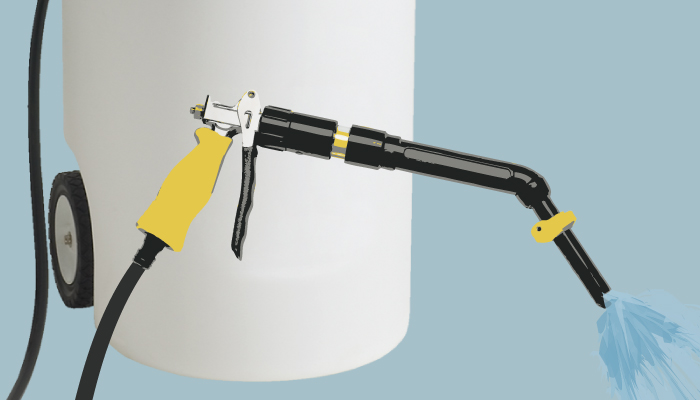We use cookies to make your experience better. To comply with the new e-Privacy directive, we need to ask for your consent to set the cookies. Learn more.
Efficient Forklift Battery Watering Without Single Point Systems
Integrated Watering Systems are the gold standard for watering forklift batteries. For industrial operations that have the means to install them, these automated watering systems are a great investment.
But what about the many, many facilities that aren't ready to move to a single point system? In 2015, industry publication Modern Materials Handling reported that 70 percent of North American forklift users still water batteries by hand. Is there a way to keep forklift battery water levels perfectly within spec, without resorting to time-consuming and hazardous methods of watering batteries?
Of course there is. You just need the right equipment. Here's a rundown of everything you'll need to water forklift batteries as safely and efficiently as possible — without investing in a single point watering system: 
-
Start by protecting staff from potential electrolyte splashes and drips. A complete Personal Protective Kit from BHS provides all the personal protective equipment that OSHA recommends for employees who work manually with forklift batteries. The full range of acid-resistant clothing will keep your staff safe even if an accident occurs during the watering process.
-
Provide a Battery Watering Cart so that staff can water batteries without a central water supply. Even if you have a readily available water source within the battery room, it might not be practical to route a hose through all the system shelves.
Battery Watering Carts from BHS allow staff to take their water supply with them, anywhere in the facility. Integrated casters provide simple, ergonomic transportation, while a variety of power sources (including a nonelectric Bladder Tank) are available to pump water into battery cells.
-
Outfit your Watering Carts with a battery Water Gun for greater safety and accuracy while filling cells. For years, battery room operators just filled battery cells with a jug of water. There are a few problems with this technique. First of all, it is nearly impossible to control the flow. One nudge, and the cell ends up overwatered. When that happens, you just have to sigh and wait for the boil over.
The other big problem with the old way of watering batteries is that it often forces staff to lean and reach to access batteries in further-off stands. Not only is that an ergonomic risk, it makes it even more difficult to control water flow.
Water Guns from BHS solve all of these problems, and they attach seamlessly to the entire range of BHS Watering Carts. Water Guns regulate flow with a diffuser that provides a smooth, gentle supply of water. They even feature a shut-off valve that ensures a precise fill, without a single drop of excess. For yet another level of accuracy, BHS Water Guns are equipped with an adjustable automatic shut-off mechanism so users don't have to eyeball the water level.
In order to get the most out of your forklift batteries, it's essential to keep the electrolyte level in the cells within the proper range. With battery watering equipment from BHS, that task doesn't have to be difficult, inconsistent, or time-consuming. An investment in watering equipment today will pay enormous dividends by allowing your forklift batteries to perform at their absolute best, every time.
References:
Bond, Josh. “Other Voices: The major impact of watering on battery room operations and maintenance.” MMH. Peerless Media LLC, 10 Sept. 2015. Web. 27 Aug. 2016.
“Personal Protective Equipment - 1910.132.” OSHA. Occupational Safety and Health Administration, United States Department of Labor, n.d. Web. 27 Aug. 2016.
